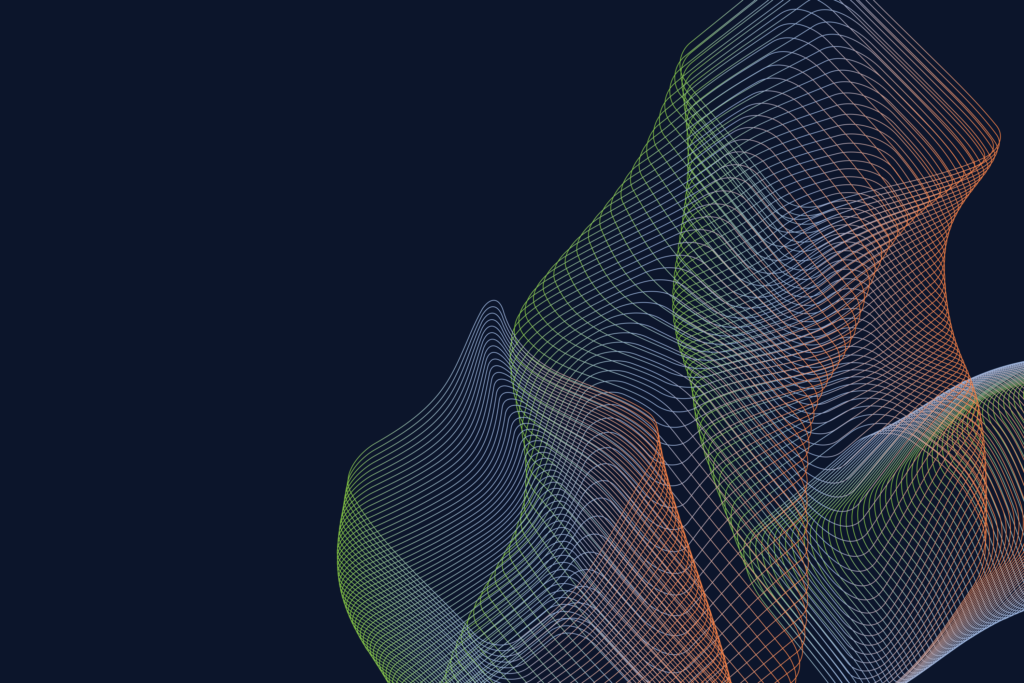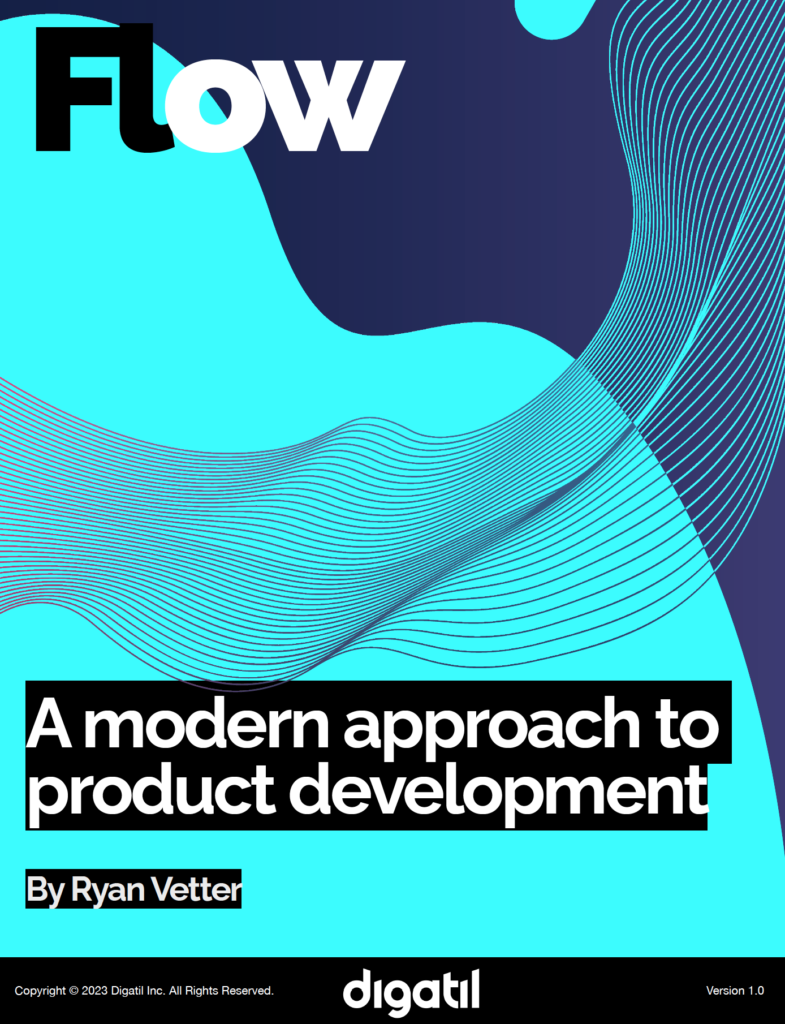Flow
Flow Manual – Version 1.0
Flow development
Flow is an inventive approach to product development, sculpted by years of experience in software development, wisdom derived from martial arts and ice hockey, and the advanced capabilities of Artificial Intelligence (AI). The fundamentals of Flow are shaped by these elements, converging into a unique methodology.
Flow sets out to advance the way software and product development is done, altering the way organizations operate and how their teams collaborate. By amalgamating insights gleaned from traditional methodologies with innovative concepts, Flow mitigates the flaws seen in prevailing methods and their resultant products. Additionally, it harnesses AI’s progressive capacity for automation, reshaping the process of product development.
With the use of AI as a foundation for automation in software and product development, unnecessary and superfluous roles and rigid rules are eliminated in Flow. Flow is the modern approach to software and product development, and is fit for organizations both small and large.
“Using no way as way, and having no limitation as limitation.”
Ryan Vetter, Founder
Manifesto
FOUNDATION
This is the foundation of Flow. It’s a tenet of Bruce Lee’s martial art, Jeet Kune Do. The first part, Using no way as way, is an important concept. Using the analogy of a fight, one must not focus on the way to fight. The focus should be on what the natural flow of reaction is. Otherwise, one’s reactions will be slower and performance hindered: it’s overly contrived.
The other part, having no limitation as limitation, is about not limiting oneself. Using a fight analogy as above, when one is in a fight, one should not limit themselves to a particular martial art that they have practiced and trained in. This will put limits around what a fighter can ascend to. The goal is to expand beyond such limits to reach new skill levels and higher performance.
Roles
DEMOCRATIC ENVIRONMENT
Flow doesn’t mandate specific roles. It fosters a democratic environment where everyone is a de facto Product Owner, taking ownership of the product with a zeal for creating value. It’s important that each Flow team member have a defined purpose as each person has a unique set of skills, but that all Flow team members can quickly transition into different roles and back again as they determine, just like players on a shift in ice hockey.
Flow is derived from the empirical reality of both business and life. Ideas… solutions to problems… innovation… can come in a dream… or on a walk… or playing tennis, etc.: in a sort of random fashion and from anyone. Flow seeks to unchain teams and let their creativity flow, each person maximally contributing to the product where all ideas are encouraged.
What is also foundational to this approach is AI. Through its ability to automate every aspect of product development, it directly enables the empowerment of business owners and ‘non-technical’ people to collapse product development and decision-making more within their sphere of influence and control. In this way, a Flow team may be comprised of all ‘non-technical’ people who are able to produce a complete product independently.
We Will Help You Every Step Of The Way
Get started with Digatil by contacting us for a free consultation today.
Guidelines
01
Limit project Length
Limit project lengths to 6 months or less as much as possible, with the understanding that longer projects increase risk and reduce value as work gets dated due to priorities and requirements changing.
02
Limit team size
Limit team sizes to as small as possible: under 12 and ideally only 5. Team size will be a function of the complexity of the product development and the degree to which AI is leveraged.
03
Short Iterations
Iterative development time may vary, but keep them as short as possible: iteration
time will also be a function of the degree to which AI is utilized.
04
Organizational change
Flow should be the catalyst and foundation for organizational change to flatten hierarchical structures.
05
Fund teams over “Projects”
Traditional project management is irrelevant in Flow. Teams should be funded who self-form and create valuable output in a self-sufficient way.
06
Less Documentation
Eliminate as much documentation as possible with the understanding that
documentation adds little value to products.
07
Rapidly Prototyped
Each new product or idea or feature should first be rapidly prototyped and tested with target users. Strive for no longer than 1 day to develop a first prototype of an idea or product or feature and build from there.
08
Comment code
Code should be clearly commented on. Otherwise, efficiencies will result in the future.
09
Use AI
Use Artificial Intelligence (AI) as much as possible and ideally at all times for every aspect of product development, including decision-making. This depoliticizes decisions and rationalizes the process of product development.
10
Limit Meetings
Eliminate all meetings unless there is a clear reason for one, and limit meetings to no more than 5 minutes unless there is a clear reason to go beyond this.
11
Lightweight Tools
Opt for lightweight tools (e.g., simple Kanban) and reduce tool usage. This derives itself from minimal documentation.
12
Involve Users
Target users should be engaged at every stage of the product development process.
Book a One Day Sprint
In the span of just one day, your team will embark on a focused journey from problem identification to solution prototyping. Leveraging an approach that’s as structured as it is flexible, Digatil’s One Day Sprint is a dynamic blend of analysis, discussion, brainstorming, and action.
Elements of Flow

Unified Backlog System (UBS):
Flow has a Unified Backlog System. A UBS maintains a single backlog within an organization which can be accessed by multiple teams. This provides a cohesive direction for the entire organization. The order of items is defined by a priority-driven dynamic allocation model - which is expected to be embedded in an AI tool to largely automate prioritization - that incorporates: a. Determined value to target users; b. Project and feature complexity; c. Team expertise; and d. Interdependencies. This makes certain that the right teams are allocated to the right tasks at the right time.

Scaled Decentralized Decision-Making (SDDM):
Flow implements a decentralized decision-making model that strives to be wholy rationale and automated. This objective of such rationalization is to depoliticize decision making. SDDM empowers teams to make decisions by being self-empowered and to rely on AI as much as possible, fostering innovation and improving responsiveness. It also incorporates a cascading decision-making model where higher-level strategic and operational decisions are made by consensus through a network of Flow teams supported by a foundational layer of AI. It’s important for most people in an organization to interface with and be part of a Flow team. This implies that organizations be structured in a way that is much more flattened and streamlined than traditionally structured.

Integrated Continuous Improvement (ICI):
Unlike static methodologies, Flow incorporates a built-in continuous improvement cycle. ICI not only focuses on improving product quality but also targets the enhancement of process efficiency, team dynamics, and the tooling aspects of the development cycle. This element relies progressively on AI to automate as much as possible, including decision making, within and between Flow teams and organizationally.

Pulsar System (PS):
As a novel concept, Flow introduces the Pulsar System. In astronomy, a pulsar is a highly magnetized rotating star that emits beams of electromagnetic radiation. The Pulsar System, inspired by its astronomical namesake, is a rotating ‘leadership’ model where team members take turns in leading the team for a certain period. This model promotes leadership skills development, knowledge sharing, and team empowerment. However, all members on a Flow team are on equal with deference provided to AI.

Iterative and Incremental Development with Feedback Loops (IIDFL):
Flow places great emphasis on iterative development, like many Agile methodologies, and emphasizes the use of feedback loops. This encourages learning from each iteration and enables the adjustment of future tasks based on past performance and both user and AI feedback.
Ideal Structure of Flow
Integration + interconnection
Below is an illustration of an ideal structure of Flow within an organization. It shows how multiple Flow teams are organized around a UBS and projects, how they’re interconnected, how new ideas, features and projects flow, and how AI supports and is integrated into the framework.

By combining these guidelines and elements, Flow offers a comprehensive, transparent, adaptive, and inclusive approach to software and product development. It facilitates better coordination among teams, more informed and faster decision-making, the elimination of redundant roles, rules and processes, and, ultimately, the creation of products that can provide greater value to the target user.
Take the Flow Course
... Enrol for the Course
Take the FlowMaster course and learn all about Flow. This course teaches the fundamentals of Flow and also prepares those who want to take the FlowMaster certification quiz.
... Take the Quiz
Ready to become Flow certified and obtain the coveted FlowMaster certification? Take the quiz here online and become a certified FlowMaster.
Flow Learning Articles

Why you keep throwing new business process at things, why it doesn’t work, and how to fix it
In startups, you move fast: it’s lean in all respects, from the size of teams, to budgets, to process. In the enterprise, it’s weighed down

Are iPads Laptop and Desktop Replacements?
iPads defined the tablet category of computers. Originally launched in 2010 via a memorable Steve Jobs led Keynote, the iPad has grown to become quite


